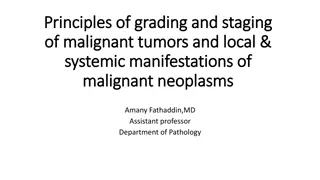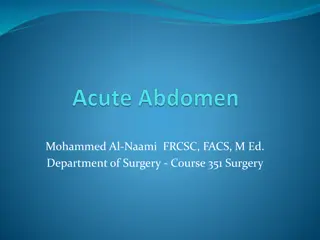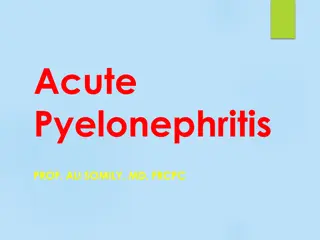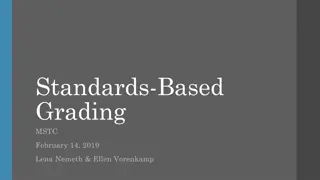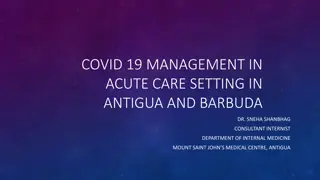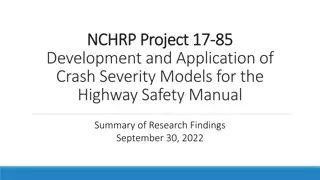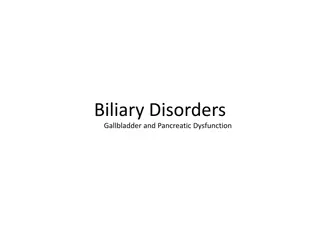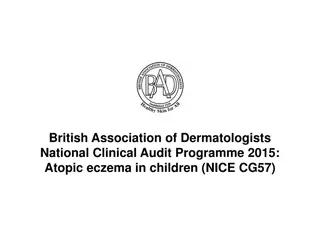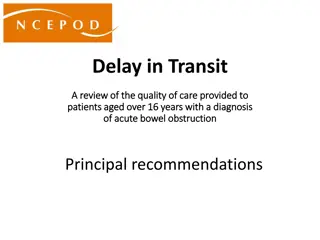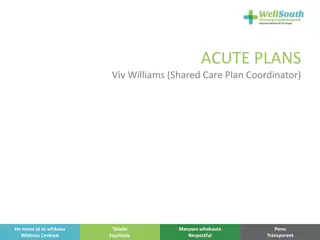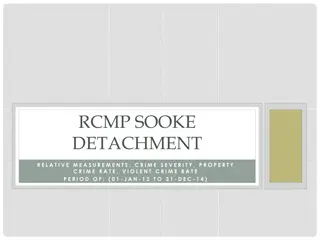Overview of Acute Cholecystitis: Diagnosis, Severity Grading, and Treatment
Acute calculous cholecystitis is a common digestive disease with varying treatment perspectives. The Tokyo Guidelines 2018 provide criteria and severity grading for the diagnosis of acute cholecystitis. Diagnosis involves local and systemic signs of inflammation along with specific imaging findings. Severity grading includes Grade I (mild), Grade II (moderate), and Grade III (severe) based on organ dysfunction. Treatment approaches differ according to the severity grade.
Download Presentation

Please find below an Image/Link to download the presentation.
The content on the website is provided AS IS for your information and personal use only. It may not be sold, licensed, or shared on other websites without obtaining consent from the author. Download presentation by click this link. If you encounter any issues during the download, it is possible that the publisher has removed the file from their server.
E N D
Presentation Transcript
Update Diagnostic criteria, severity grading and treatment of acute cholecystitis
BACKGROUND Acute calculous cholecystitis is a common digestive disease. However, the treatment of acute calculous cholecystitis has many different perspectives. The Tokyo Guidelines 2018 (TG18) diagnostic criteria and severity grading of acute cholecystitis, have become widely adopted in recent years, being used not only in clinical practice but also in numerous research studies on this disease
1. DIAGNOSTIC CRITERIA A. Local signs of inflammation etc. (1) Murphy's sign, (2) RUQ mass/pain/tenderness B. Systemic signs of inflammation etc. (1) Fever, (2) elevated CRP, (3) elevated WBC count C. Imaging findings Imaging findings characteristic of acute cholecystitis Suspected diagnosis: one item in A + one item in B Definite diagnosis: one item in A + one item in B + C
2. SEVERITY GRADING Grade III (severe) acute cholecystitis Grade III acute cholecystitis is associated with dysfunction of any one of the following organs/systems: 1. Cardiovascular dysfunction: hypotension requiring treatment with dopamine 5 g/kg per min, or any dose of norepinephrine 2. Neurological dysfunction: decreased level of consciousness 3. Respiratory dysfunction: PaO2/FiO2 ratio <300 4. Renal dysfunction: oliguria, creatinine >2.0 mg/dl 5. Hepatic dysfunction: PT-INR >1.5 3 6. Hematological dysfunction: platelet count <100,000/mm
2. SEVERITY GRADING Grade II (moderate) acute cholecystitis Grade II acute cholecystitis is associated with any one of the following conditions: 3) 1. Elevated WBC count (>18,000/mm 2. Palpable tender mass in the right upper abdominal quadrant a 3. Duration of complaints >72 h 4. Marked local inflammation (gangrenous cholecystitis, pericholecystic abscess, hepatic abscess, biliary peritonitis, emphysematous cholecystitis) Grade I (mild) acute cholecystitis Grade I acute cholecystitis does not meet the criteria of Grade III or Grade II acute cholecystitis. It can also be defined as acute cholecystitis in a healthy patient with no organ dysfunction and mild inflammatory changes in the gallbladder, making cholecystectomy a safe and low-risk operative procedure
3. TREATMENT Grade I
3. TREATMENT Grade II
3. TREATMENT Grade III
3.1. GALLBLADDER DRAINAGE Optimal timing of gallbladder drainage For patients with moderate (grade II) disease, gallbladder drainage should be used only when a patient does not respond to conservative treatment. For patients with severe (grade III) disease, gallbladder drainage is recommended with intensive care. Predictors for failure of conservative treatment: 1. Age above 70 years old, diabetes, tachycardia and a distended gallbladder at admission. 2. WBC >15000 cell/ l, an elevated temperature and age above 70 years old were found to be predictors for the failure of conservative treatment at 24-h and 48-h follow-up.
3.1.1.PERCUTANEOUS TRANSHEPATIC GALLBLADDER DRAINAGE After ultrasound-guided transhepatic gallbladder puncture has been performed with an 18-G needle, a 6- to 10-Fr catheter is placed in the gallbladder using a guidewire under fluoroscopy.
3.1.2.PERCUTANEOUS TRANSHEPATIC GALLBLADDER ASPIRATION PTGBA: aspiration could be unsuccessful because of replacement of bile with dense biliary sludge or pus
3.1.3. ENDOSCOPIC NASO-GALLBLADDER DRAINAGE (ENGBD) The detailed techniques for ENGBD are as follows: After successful bile duct cannulation, a 0.025- or 0.035- inch guidewire is advanced into the cystic duct and subsequently into the gallbladder. Next, the catheter is withdrawn and the guidewire remains in the gallbladder, and a 5-Fr to 8.5-Fr pigtail NGBT is inserted into the gallbladder.
3.1.4. GALLBLADDER STENTING (EGBS) In comparison, the EGBS procedure is the same as for ENGBD, but a 6-Fr to 10-Fr internal stent is placed in the gallbladder, instead
3.1.5. ENDOSCOPIC ULTRASOUND-GUIDED GALLBLADDER DRAINAGE (EUS-GBD) The gallbladder is punctured from the body or antrum of the stomach or duodenal bulb under direct EUS visualization. A 0.035-inch guidewire is inserted through the outer sheath, and dilation of the tract using a mechanical dilator, electrocautery dilator, or balloon dilator is then performed. Finally, a NGBT, double pigtail plastic stent (PS), or self- expandable metal stent (SEMS) is inserted into the gallbladder
Drainage methoda Factors that affect the strength of a recommendation Quality of evidence The balance between desirable and undesirable effects Very good Technical difficulty Patient values and preferences Cost PTGBD B (moderate) No Yes Low cost PTGBA C (low) Good (insufficient drainage effect) No No Very low cost ENGBD/EGBS C (low) Good (low success rate) Yes (difficult) Yes/no Low cost Surgical C (low) Good (surgical risk) No Yes High cost cholecystostomy
3.2 SURGERY LAPAROSCOPIC CHOLECYSTECTOMY Step 1: If a distended GB interferes with the field of view, it should be decompressed by needle aspiration Step 2: Effective retraction of the GB to develop a plane in the Calot's triangle area and identify its boundaries (countertraction) Step 3: Starting dissection from the posterior leaf of the peritoneum covering the neck of the GB and exposing the GB surface above Rouvi re's sulcus Step 4: Maintaining the plane of dissection on the GB surface throughout LC Step 5: Dissecting the lower part of the GB bed (at least one-third) to obtain the critical view of safety Step 6: Creating the critical view of safety
Critical view of safety: Calot's triangle is dissected free of fat and fibrous tissue and the lower end of the gallbladder is dissected off the liver bed - Failure to create this view is an indication for conversion to Open cholecystectomy -





